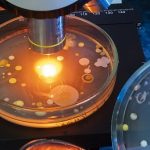Présentation
RÉSUMÉ
La voie thermochimique indirecte est utilisée pour transformer la biomasse lignocellulosique en biocarburants liquides dits "de deuxième génération". Cette voie consiste en une étape de prétraitement de la biomasse, transformée ensuite en gaz de synthèse par oxydation partielle dans une unité de gazéification. Ce gaz, mélange de monoxyde de carbone (CO) et de dihydrogène (H2), est ensuite conditionné et purifié pour permettre la synthèse d'hydrocarbures par la réaction Fischer-Tropsch. En dernier lieu, les effluents hydrocarbonés sont hydrotraités pour en ajuster les propriétés. Les biocarburants de synthèse ainsi obtenus sont de très haute qualité. En particulier, ils sont exempts de soufre et de composés aromatiques, et peuvent être incorporés dans le pool de carburants conventionnels.
Lire cet article issu d'une ressource documentaire complète, actualisée et validée par des comités scientifiques.
Lire l’articleABSTRACT
The thermochemical pathway is used to obtain second-generation biofuels from lignocellulosic biomass. The indirect thermochemical route starts with a first stage of pretreatment of the biomass, which is then transformed into synthesis gas by partial oxidation in a gasification unit. This synthesis gas, a mixture of carbon monoxide (CO) and hydrogen (H2) is then conditioned and cleaned up to meet the specifications for the Fischer-Tropsch synthesis, which produces liquid hydrocarbons. The last step in this process chain is the upgrading of the hydrocarbon effluents to adjust the properties. The main end products are high quality kerosene and diesel fuel; these products do not contain sulfur or aromatics, and can readily supplement or replace fossil fuels.
Auteur(s)
-
Laurent BOURNAY : Ingénieur de l'École nationale supérieure des arts et métiers (ENSAM) et de l'École nationale supérieure du pétrole et des moteurs (ENSPM) - Chef de projet B-XTL – IFP Énergies nouvelles
-
Jean-Philippe HERAUD : Ingénieur de l'École supérieure de chimie organique et minérale (ESCOM) et de l'École nationale supérieure du pétrole et des moteurs (ENSPM) - Chef de projet Fischer-Tropsch – IFP Énergies nouvelles
-
Anne-Claire PIERRON : Ingénieur de l'École nationale supérieure des industries chimiques (ENSIC) - Ingénieur de recherche en génie des procédés – IFP Énergies nouvelles
INTRODUCTION
Domaine : Transformation de la biomasse lignocellulosique en carburant de synthèse (Chaîne Biomass To Liquids ou BTL)
Degré de diffusion de la technologie : Émergence | Croissance | Maturité
Technologies impliquées : Torréfaction, gazéification, réaction du gaz à l'eau (Water-Gas-Shift), désacidification des gaz, purification, synthèse Fischer-Tropsch
Domaines d'application : Production de biocarburants de deuxième génération
Principaux acteurs français :
Pôles de compétitivité :
Centres de compétence : CEA2, IFP Énergies nouvelles
Industriels : Axens, Total, Avril, Air Liquide
Autres acteurs dans le monde : ThyssenKrupp Industrial Solutions, UPM, KIT (Karlsruhe Institute for Technology) Lurgi, Siemens, Linde (Choren), Chemrec
Contact : http://www.ifpenergiesnouvelles.fr
KEYWORDS
thermochemistry | Biofuel | gasification | BTL | Fischer-Tropsch | syngas
DOI (Digital Object Identifier)
CET ARTICLE SE TROUVE ÉGALEMENT DANS :
Accueil > Ressources documentaires > Environnement - Sécurité > Métier : responsable environnement > Innovations en énergie et environnement > Production de biokérosène et de biogazole par la voie thermochimique
Accueil > Ressources documentaires > Innovation > Innovations technologiques > Innovations en énergie et environnement > Production de biokérosène et de biogazole par la voie thermochimique
Accueil > Ressources documentaires > Ingénierie des transports > Véhicule et mobilité du futur > Carburants et matériaux allégés pour véhicule > Production de biokérosène et de biogazole par la voie thermochimique
Cet article fait partie de l’offre
Ressources énergétiques et stockage
(175 articles en ce moment)
Cette offre vous donne accès à :
Une base complète d’articles
Actualisée et enrichie d’articles validés par nos comités scientifiques
Des services
Un ensemble d'outils exclusifs en complément des ressources
Un Parcours Pratique
Opérationnel et didactique, pour garantir l'acquisition des compétences transverses
Doc & Quiz
Des articles interactifs avec des quiz, pour une lecture constructive
Présentation
Cet article fait partie de l’offre
Ressources énergétiques et stockage
(175 articles en ce moment)
Cette offre vous donne accès à :
Une base complète d’articles
Actualisée et enrichie d’articles validés par nos comités scientifiques
Des services
Un ensemble d'outils exclusifs en complément des ressources
Un Parcours Pratique
Opérationnel et didactique, pour garantir l'acquisition des compétences transverses
Doc & Quiz
Des articles interactifs avec des quiz, pour une lecture constructive
BIBLIOGRAPHIE
-
(1) - BP - Statistical review of world energy. - Full report (2015).
-
(2) - AIE - World Energy Outlook - (2015).
-
(3) - LORNE (D.) et al - Les nouvelles technologies de production de biocarburants : état des lieux et enjeux des filières en développement. - IFPEN Panorama (2011).
-
(4) - MOHAN (D.) et al - Pyrolysis of wood/biomass for bio-oil : a critical review. - Energy Fuels, 20(3), p. 848-889 (2006).
-
(5) - BRIDGWATER (A.V.) - Review of fast pyrolysis of biomass and product upgrading. - Biomass and bioenergy, 38, p. 68-94 (2012).
-
(6) - BRIDGWATER (A.V.), PEACOCKE (G.V.C.) - Fast pyrolysis processes for biomass. - Renewable and Sustainable Energy Reviews, 4, p. 1-73 (2000).
-
...
DANS NOS BASES DOCUMENTAIRES
ANNEXES
http://www.torftech.com/torbed_technology.html
http://biomassauthority.com/thermya
http://www.ifpenergiesnouvelles.fr
http://www.thyssenkrupp-industrial-solutions.com
HAUT DE PAGE
Directive RED (Renewable Energy Directive) 2009/28/CE du Parlement européen et du Conseil du 23 avril 2009 relative à la promotion de l'utilisation de l'énergie produite à partir de sources renouvelables et modifiant puis abrogeant les directives 2001/77/CE et 2003/30/CE
Directive FQD (Fuel Quality Directive) 2009/30/CE du Parlement européen et du Conseil du 23 avril 2009 modifiant la directive 98/70/CE en ce qui concerne les spécifications relatives à l'essence, au carburant diesel et aux gazoles ainsi que l'introduction d'un mécanisme permettant de surveiller et de réduire les émissions de gaz à effet de serre, modifiant la directive 1999/32/CE du Conseil en ce qui concerne les spécifications relatives aux carburants utilisés par les bateaux de navigation intérieure et abrogeant la directive 93/12/CEE
...Cet article fait partie de l’offre
Ressources énergétiques et stockage
(175 articles en ce moment)
Cette offre vous donne accès à :
Une base complète d’articles
Actualisée et enrichie d’articles validés par nos comités scientifiques
Des services
Un ensemble d'outils exclusifs en complément des ressources
Un Parcours Pratique
Opérationnel et didactique, pour garantir l'acquisition des compétences transverses
Doc & Quiz
Des articles interactifs avec des quiz, pour une lecture constructive











